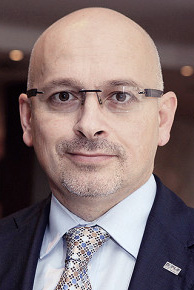


|
||
|
||
The São Paulo Multistakeholder Guidelines adopted at last week’s NETmundial +10 conference (Sao Paulo, 29-30 April 2024) provide a breath of fresh air in the current digital debates. They untangle quite a few confusions and offer a pragmatic path forward.
The NETMundial statement resolves terminological confusion between internet and digital by combining two terms in the phrase ‘internet governance and digital policy’. Read why the semantic delineation between internet and digital matters in governance discussions.
For too long, discussions around digital governance have been mired in a false dichotomy of multilateral versus multistakeholder approaches. The São Paulo Guidelines clear up this misunderstanding by illustrating how multilateral processes can incorporate multistakeholder engagement, fostering cross-fertilisation rather than competition between these governance models. The time has come to shift our focus from choosing sides to exploring how these approaches can effectively coexist and complement each other.
The risk of “fake multistakeholderism,” which results from power imbalances, is one of the crucial issues that the Guidelines address. When representatives of trillion-dollar companies and marginalised communities are placed at the same discussion table without addressing the power imbalance, the outcomes can be superficial at least and manipulative at worst. The guidelines propose steps to empower weaker stakeholders, ensuring their voices are heard and valued, moving towards a genuinely inclusive and effective multistakeholder model.
The São Paulo Guidelines also advocate for more tangible outcomes from the Internet Governance Forum (IGF) and other multistakeholder processes. Typically, the main—and justified—criticism of the IGF is that it is strong on talks but weak on actions. This weakness is particularly problematic for small and developing countries that cannot afford people and funding to participate in events that do not address their pressing concerns, from Internet access to cybersecurity.
Following NETMundial+10 guidelines, we should activate a long-overlooked provision of the Tunis Agenda specifying that IGF can have tangible outcomes through policy recommendations. Typical opposition to tangible outputs of the IGF was concern that negotiation dynamics might stifle open exchanges at the IGF.
Today, this concern can be addressed using the AI technology to monitor the drafting process and ensure that inputs are reflected in the final text of IGF recommendations. AI tools can help us follow the life of our submissions and inputs as the final document takes shape. In this way, AI-supported drafting of IGF policy recommendations would make IGF much more relevant for all stakeholders while preserving the open space nature of IGF debates and ensuring overall transparency.
The growing risk of duplication of digital governance initiatives is another issue highlighted by the Sao Paolo Guidelines. Last year alone saw a proliferation of, in particular, AI governance initiatives, which creates confusion and limits the effective participation of less-resourced actors from the Global South. For sorting out a range of governance initiatives, there is a need for a sort of ‘Bauhaus test’ (forms follow the function) to ensure that new initiatives are necessary. This test asks whether the governance functions of new initiatives duplicate those of existing bodies and whether they genuinely add value to the digital governance landscape.
In conclusion, the São Paulo Multistakeholder Guidelines set forth a vision for a more inclusive, fair, and effective framework for AI and digital governance. By addressing power imbalances, advocating for tangible outcomes, and preventing unnecessary duplication, these guidelines pave the way for a governance model as diverse as the digital world it seeks to regulate. Sao Paulo multistakeholder guidelines provide a useful compass for navigating the storming waters of digital and AI negotiations in the context of the Global Digital Compact and the UN Summit of Future this year, and the WSIS-20 review in 2025.
See Also:
NETMundial+10 Reporting
NETMundial_10 Multistakeholder Statement
Reducing terminological confusion: Is it digital or internet governance
Sponsored byWhoisXML API

Sponsored byCSC

Sponsored byDNIB.com

Sponsored byIPv4.Global

Sponsored byRadix

Sponsored byVerisign

Sponsored byVerisign
